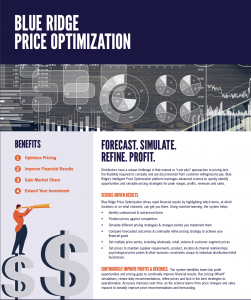Pricing Strategy #2: You’d be Dumb to Ignore Competitor Pricing
Welcome back to our series, “6 Pricing Strategies You’d be Dumb to Ignore”! Last week we talked about COVID-19’s explosive impact on ecommerce and the need to establish pricing consistency. The next pricing strategy you'd be dumb to ignore is...
Strategy #2: React Quickly to Competitor Pricing
 We know you are all yearning for some sweet NBA action right now. The cat-like moves, the uncanny reaction time when a turnover happens and someone gets a full-court fastbreak... The excitement of the athletes' split-second decision making. It never ceases to amaze fans.
We know you are all yearning for some sweet NBA action right now. The cat-like moves, the uncanny reaction time when a turnover happens and someone gets a full-court fastbreak... The excitement of the athletes' split-second decision making. It never ceases to amaze fans.
Well, it's not quite like that for the split-second decisions that ecommerce and the pandemic are forcing on distributors and wholesale businesses right now.
The brutal transparency of competitive pricing has these companies sweating. NOT in a good way. They must figure out how to pivot from traditional channels to online demand, on a dime. The game plan is very different.
Distributors and retailers using old-school “cost-plus” pricing will not be able to react to quickly enough to new competitive online threats. These pricing strategies are a big, fat fail.
In a nutshell, cost-plus pricing strategies are inflexible, uninformed and reactive.
Ignoring Price Sensitivity is Reckless
Cost-plus pricing ignores market competition and price sensitivity. The idea is reckless… apply peanut-butter pricing across the assortment without digging into what drives customers to buy your products. What about all the psychological factors that influence price sensitivity of customers, like reference price, ease of comparison (how obvious or easy is it to compare your product to alternatives), the cost of switching, and the perception of fairness? Nope. Just pure “set it and forget it.”
Up until now, that’s just how it was done. It worked. It made sense. But now, to put it harshly, businesses using cost-plus pricing today will get their ankles broken. Does your business fall into this category? If you’re not sure, ask yourself these questions:
Does your pricing model...
- Look at market competition every day and make adjustments automatically?
- Take into account price sensitivity, or customer willingness-to pay?
- Show how substitutable your product is when sold at any location or on specific channels?
- Analyze competitor prices and put context behind pricing decisions, vs. blind price matching?
If the answer for these is “no,” then you do not have a sustainable pricing strategy.
AI and Machine Learning: The Buzzer Beater
Now with the availability of breakthrough AI and Machine Learning technologies, businesses are not only eliminating mis-priced products, but are actually optimizing profits with great foresight. In just a few keystrokes.
Intelligent pricing logic improves your competitive position by uncovering opportunities you didn’t even know were there.
How much are people willing to pay for your product across various locations, regions, channels and even by customer? Or deep in the long-tail assortments that never go under the microscope? If you are blindly matching competitor prices, are you chasing someone else’s poor pricing decisions or getting into price wars, without even knowing it?
What about Amazon? (Damnit, Amazon!)… Should you be paying attention to Amazon or an industry-specialist competitor for a certain product sold on a particular web channel? Maybe you shouldn’t worry about them at all, in cases where the product is not price sensitive – or has no competitive substitute available?
Tools for Measuring Price Sensitivity
All of these considerations cause a slow and unprofitable competitive price response. Unfortunately, most companies either have no idea how much competitive prices are hurting them – or they do know, but they lack the time/resources to effectively calculate and react.
A machine learning-based price optimization tool lets you quickly measure price sensitivity and run pricing analysis by product, channel and competitor. You can understand the impact of a price change before you make the change. So every decision becomes a confident and profitable one.
In fact, if you can make just a 1% price improvement, you can drive a 30% improvement in gross profits. Trae would be proud.
So, What's Your Game Plan?
Where do you fall? How confident is y our business in pricing for the new online-savvy customer? Do you have the tools to quickly and confidently adjust prices to have an immediate and significant impact on profitability? Is there untapped margin you’d like to explore?
our business in pricing for the new online-savvy customer? Do you have the tools to quickly and confidently adjust prices to have an immediate and significant impact on profitability? Is there untapped margin you’d like to explore?
If so, check out this resource to learn how price optimization software works.
Go to Strategy 3: You'd Be Dumb to Ignore Flexibility to Cost Changes
Read this series from the beginning


Comments are closed.